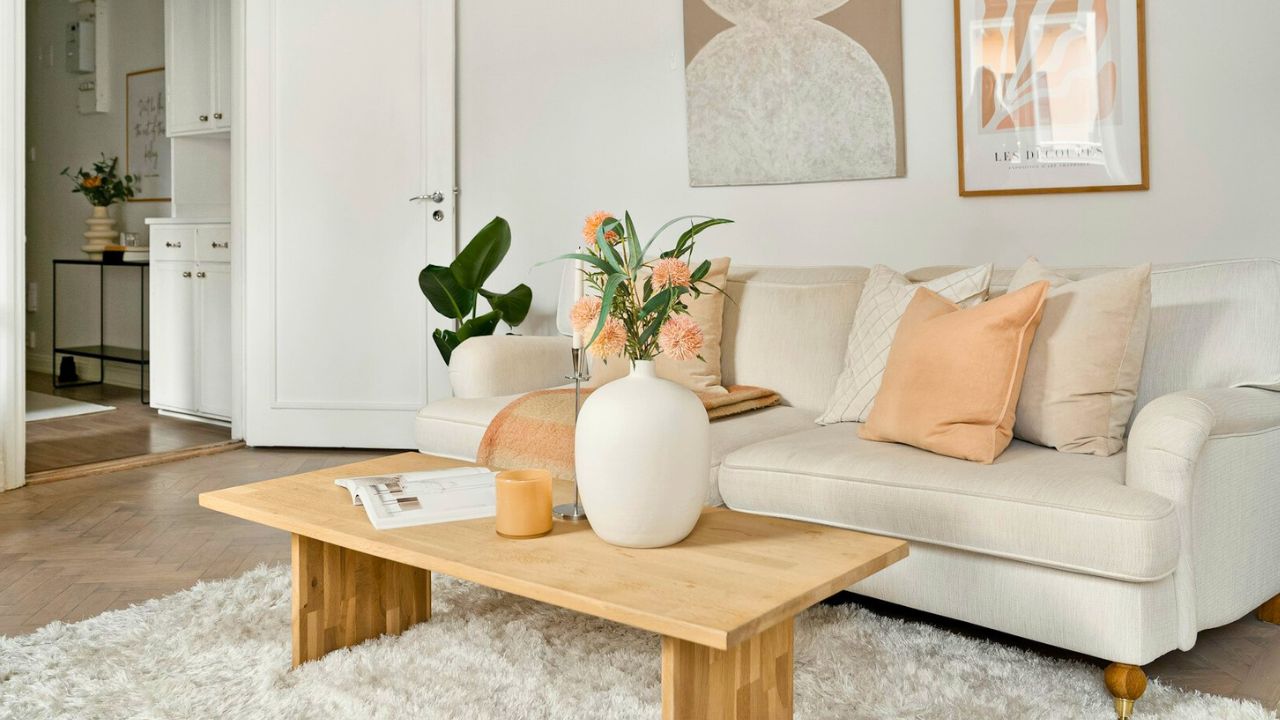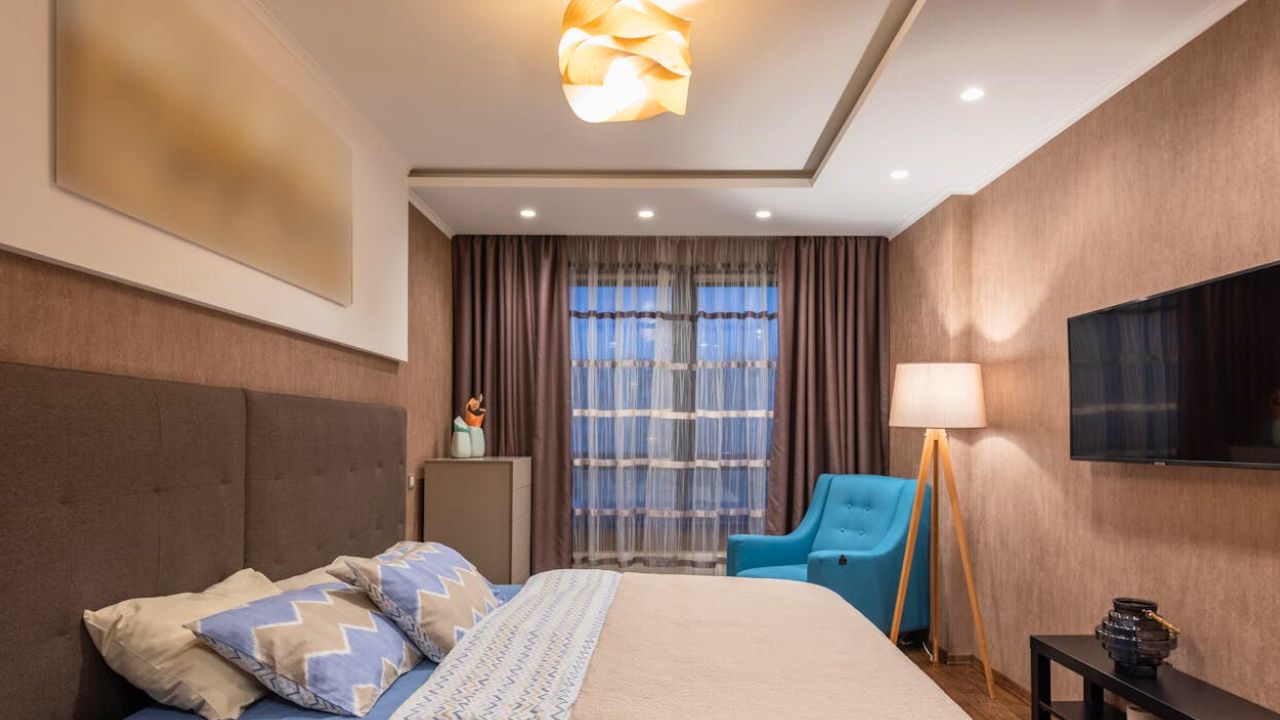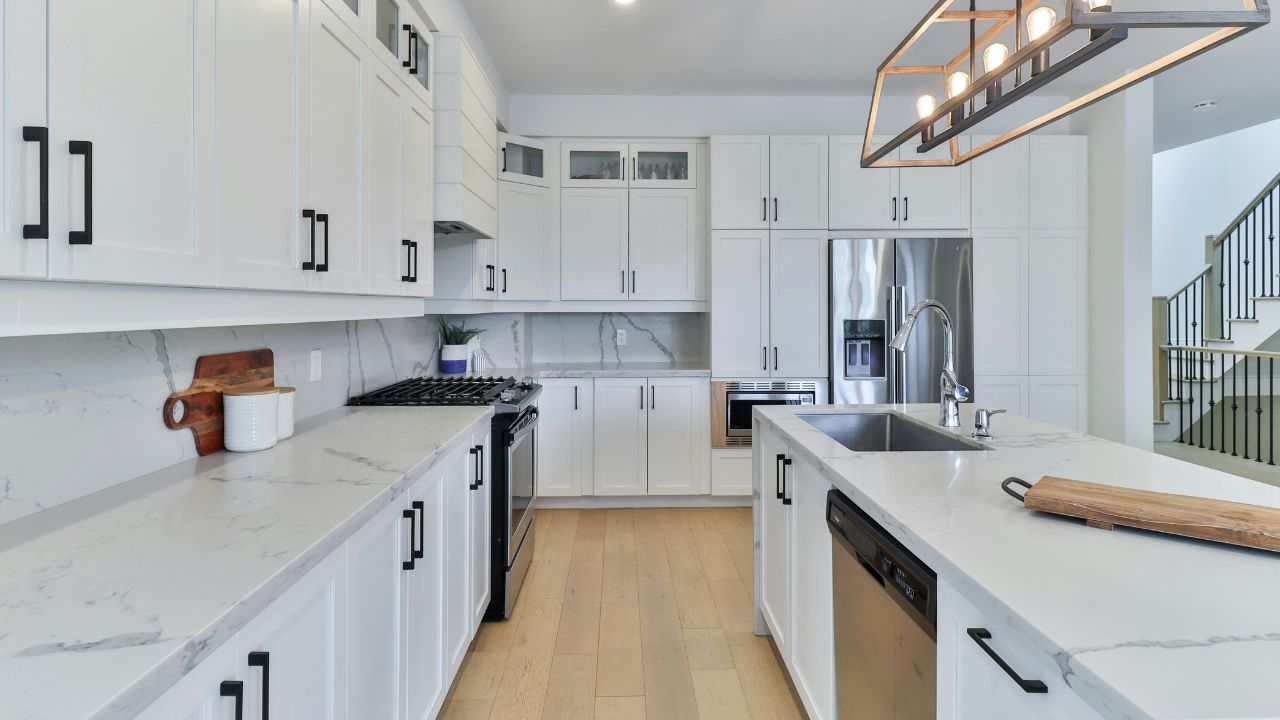10 ways to get the designer look without designer prices
Designer rooms aren’t about spending more. They’re about choices that respect proportion, light, and repetition. Do these ten and you’ll get the look—on a normal budget and a real-life timeline.
Choose a house palette once and reuse it everywhere

Pick one trim color, one main wall family, and two accents. Repeat across rooms in art, textiles, and runners. When colors handshake from space to space, even simple furniture reads elevated. This is the cheapest design decision with the biggest payoff.
Upgrade the touchpoints people notice most

Door levers, cabinet pulls, sink faucet, and switch plates are what hands touch daily. Heavier hardware and a solid faucet in a matching finish make everything around them feel pricier. Keep the metals consistent. Mismatched finishes are where budget shows first.
Hang art like you mean it

Large and centered over furniture beats scattered and small every time. Align bottoms or centers so your eye can rest. If you love a gallery wall, make the frames match and let the art vary. Order is what makes it feel “professional,” not the price tag.
Use lighting in layers instead of one bright ceiling

Ceiling light for volume, sconces or picture lights at eye level, lamps for faces. Keep bulbs warm and consistent per room. If hardwiring isn’t in the plan, use plug-in sconces with cord covers. Glow sells the room more than any decor item you can buy.
Add one big mirror where the light needs help

Opposite or diagonal from a window, a proper-sized mirror brightens the center of the room and stretches walls. Choose two-thirds to three-quarters the width of the furniture you’re anchoring. Too small feels cheap; right-sized reads custom.
Finish edges so nothing looks temporary

Curtains that kiss the floor, rugs that catch front legs, cords managed, and baseboards free of clutter. These line fixes are what separate “we just moved in” from “we thought it through.” They also cost a lot less than a new sofa.
Style one strong vignette per room and leave air

Entry console, mantel, or dresser: tall element (lamp or branch), medium (stack of books), small (bowl or frame), all on a tray or runner. Then stop. Air around objects is the secret. Over-styling looks try-hard and cheap.
Let honest materials carry your budget buys

Pair a simple Ikea cabinet with a stone tray, real linen panels, or a vintage wood bowl. The honest material sets the tone, and the budget piece rides along. One or two “real” items in every sightline are enough to elevate the whole mix.
Create zones that work like you live

Conversation area, reading corner, kitchen landing strip. Give each zone a clear leader and the tools it needs. Function is what makes rooms feel expensive—because nothing is fighting you. When the layout clicks, the decor suddenly looks intentional.
Build a five-minute reset into your routine

Every evening: fold throws, fluff pillows, clear trays, click lamps. The designer look isn’t a shopping list; it’s a habit that keeps lines clean and surfaces calm. You’ll wake up to a house that still feels done—without spending another dollar.
Like Fix It Homestead’s content? Be sure to follow us.
Here’s more from us:
8 upgrades that look like you spent thousands (but didn’t)
9 small changes that instantly make a house feel high-end
*This article was developed with AI-powered tools and has been carefully reviewed by our editors.







